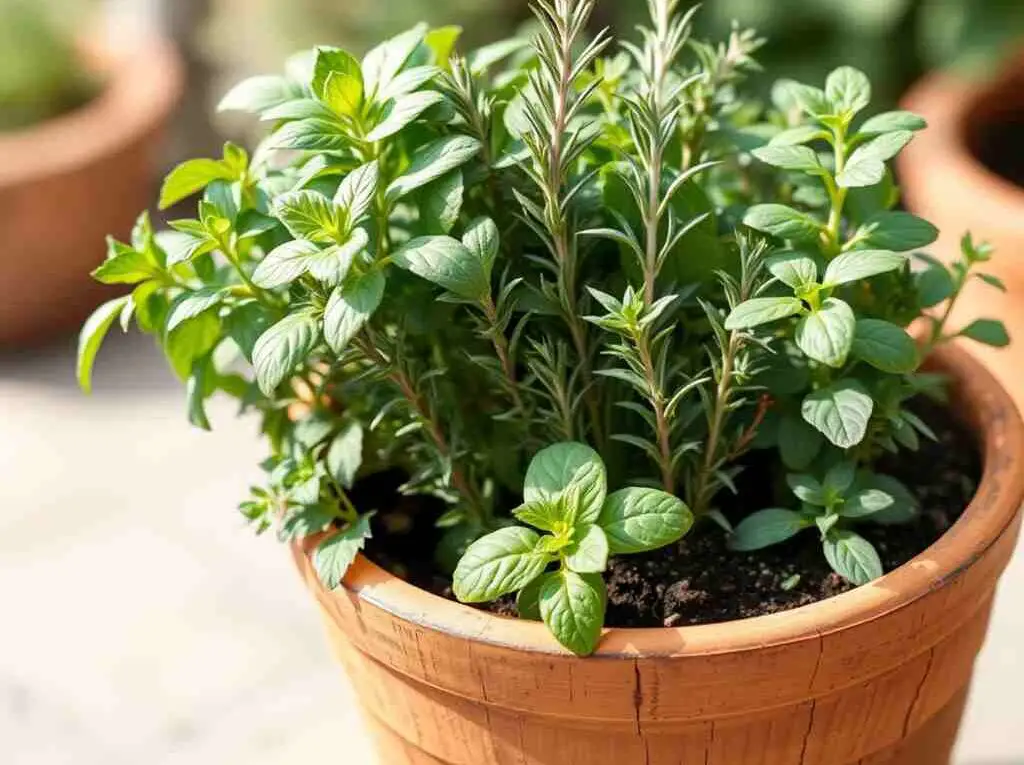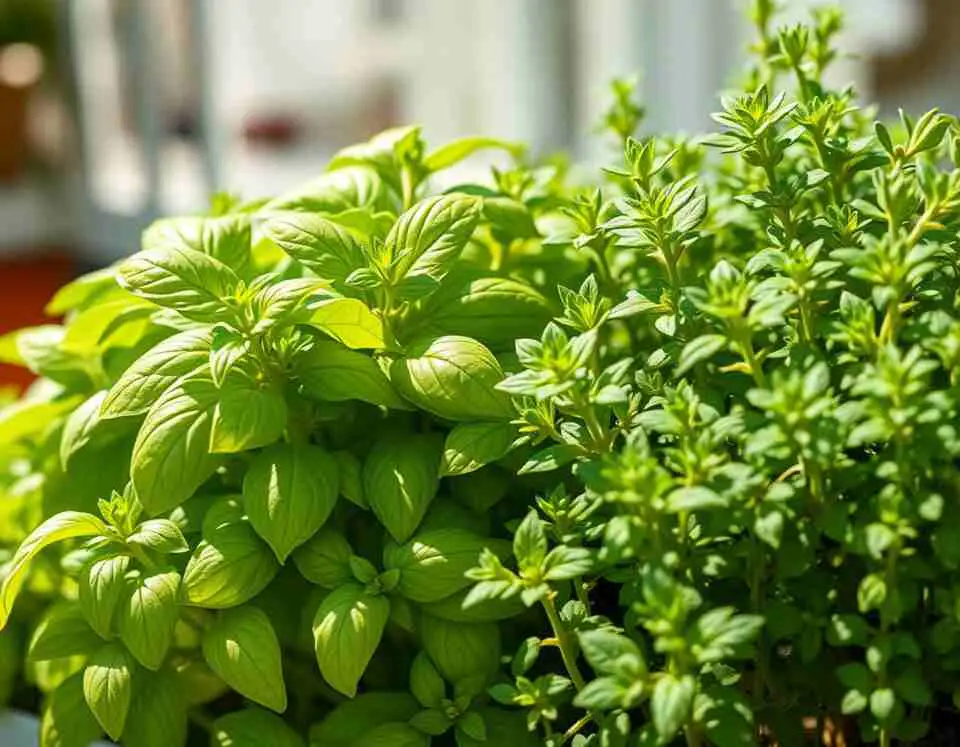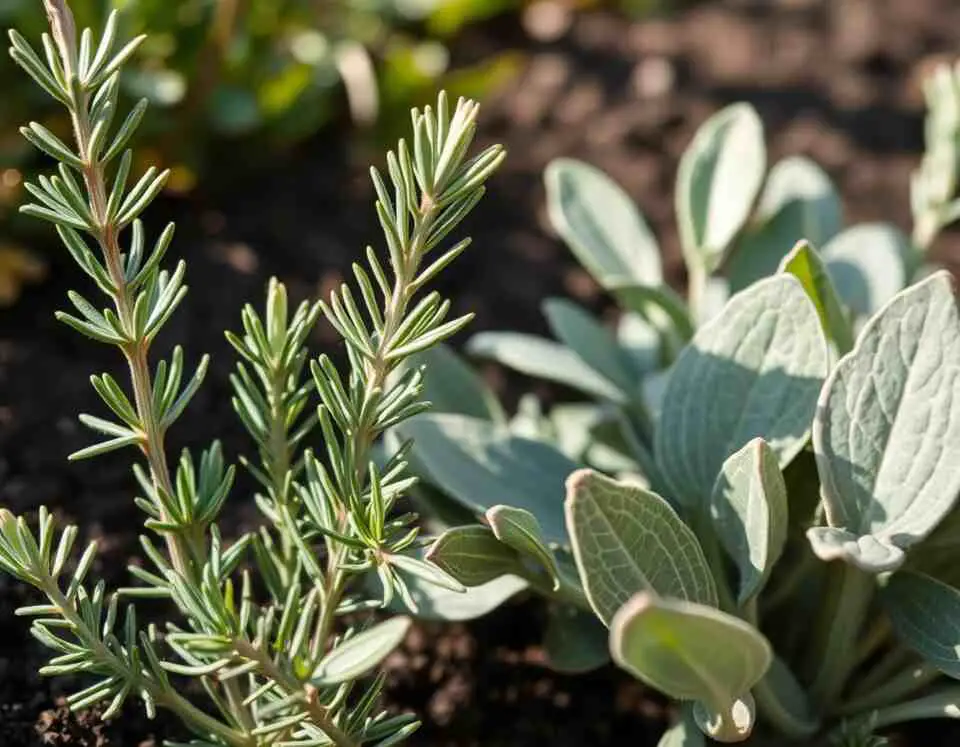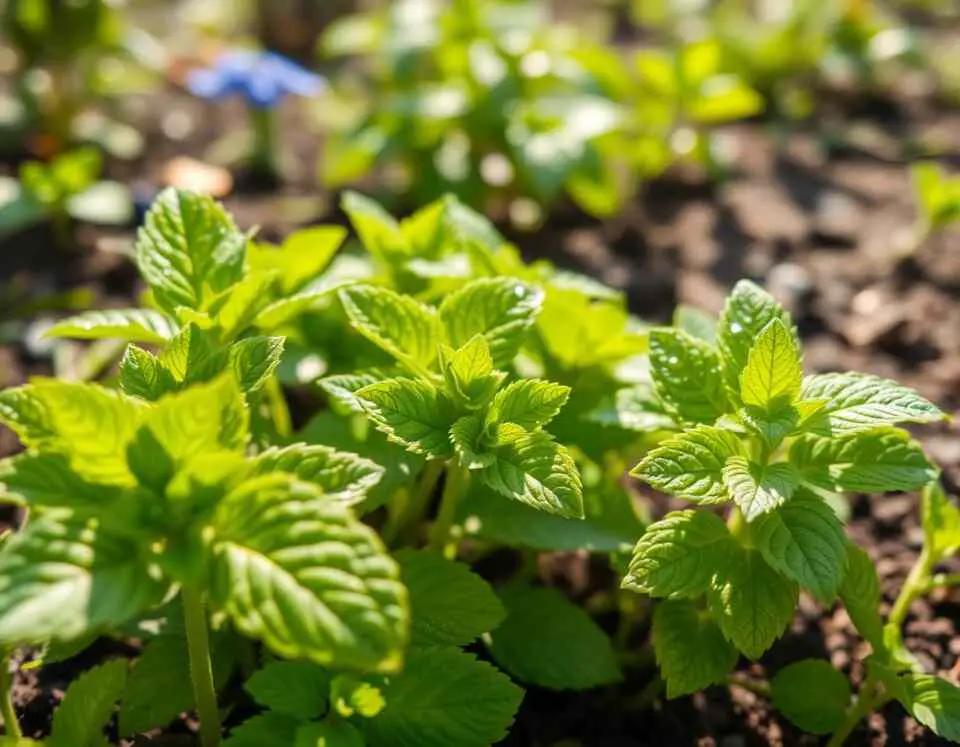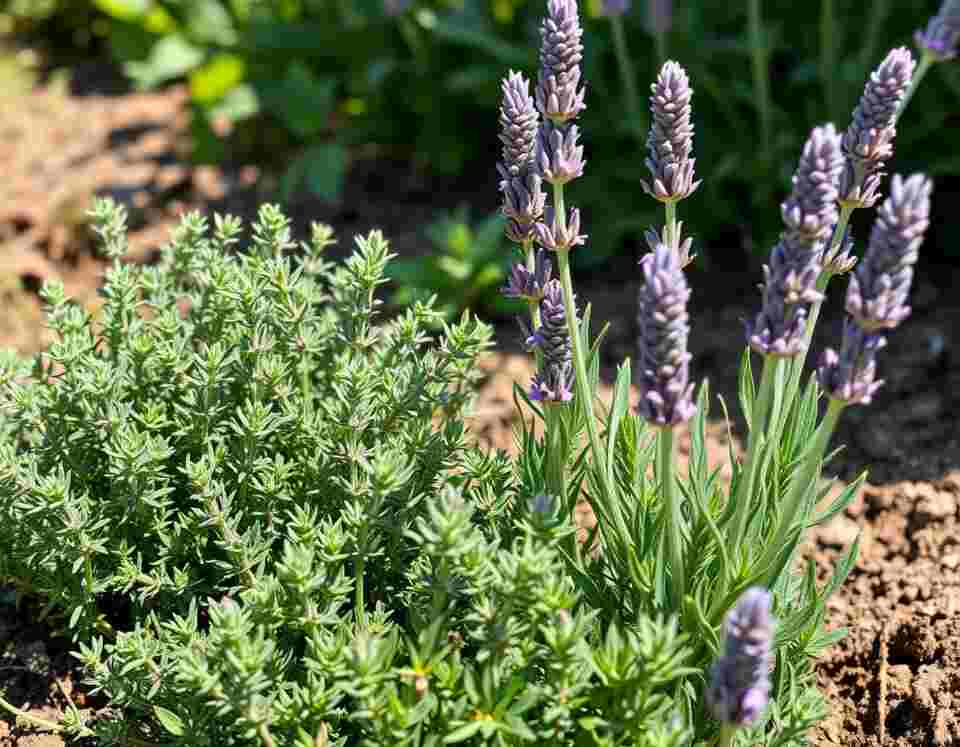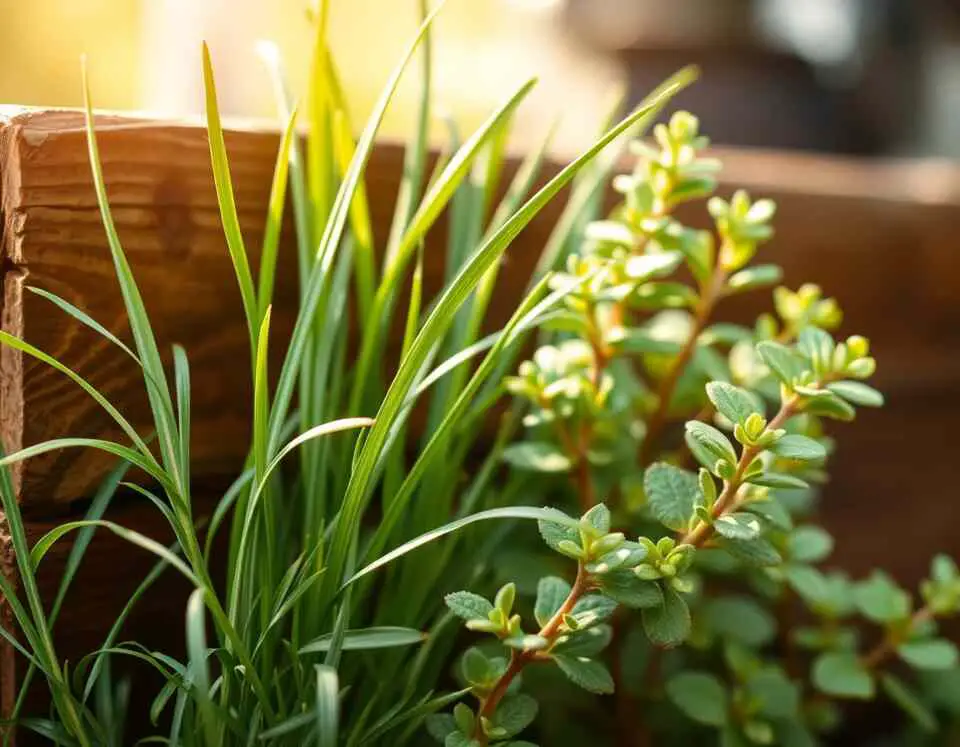Low Maintenance Herb Pairings That Truly Work!
Let me guess—you’re tired of babysitting your herbs. I get it. You start with good intentions, buy a few adorable clay pots, toss in some basil and thyme, and next thing you know… it’s a crime scene on your windowsill. 😬 Been there.
The good news? Some herbs actually like each other. They grow better together, need similar care, and don’t throw a fit if you miss a watering or two. So if you’re looking to grow herbs without turning it into a full-time job, I’ve got your back. Let’s talk about low maintenance herb pairings that actually work—in real life, not just in fancy gardening books.
Table of Contents
- 1 What Makes an Herb Pairing ‘Low-Maintenance’?
- 2 Basil + Oregano: The Italian BFFs
- 3 Chives + Parsley: Easygoing Roommates
- 4 Rosemary + Sage: Dry and Drama-Free
- 5 Mint + Lemon Balm: Keep ‘Em Contained
- 6 Thyme + Lavender: The Zen Masters
- 7 Cilantro + Dill: Cool Weather Pals
- 8 Tarragon + Marjoram: Underrated but Awesome
- 9 Final Tips for Planting Herb Buddies
- 10 So, What’s the Easiest Pairing for You?
- 11 Author
What Makes an Herb Pairing ‘Low-Maintenance’?
Before we get into the juicy pairings, let’s clear one thing up: not every herb is a team player. Some are clingy. Some are drama queens. Others? Chill as a cucumber (wait—wrong plant).
Here’s what we’re aiming for:
- Same water needs (no divas who want daily misting)
- Same sun preferences (full sun or partial shade—no compromise)
- Compatible growth habits (no space hogs)
- Minimal pest issues (because ain’t nobody got time for aphids)
Now that we’re on the same page, let’s get to the pairings.
Basil + Oregano: The Italian BFFs
You really can’t go wrong with these two. They both love full sun, warm weather, and a good pizza (okay, maybe that last part is just me).
Why they work:
- Both thrive in 6+ hours of sun
- Need watering only when soil is dry to the touch
- Both benefit from regular pinching to stay bushy
Bonus: Oregano acts like ground cover, helping keep the soil cool and moist for basil.
FYI: Don’t overwater basil—it turns into a pouty mess. I learned that the hard way. :/
Chives + Parsley: Easygoing Roommates
These two are like that chill couple who don’t argue and always bring snacks to the party.
Why they work:
- Both like moist but well-drained soil
- Partial to full sun—totally adaptable
- They grow in clumps and don’t invade each other’s space
Pro Tip: Chives help deter pests. Parsley attracts beneficial bugs. It’s a win-win.
IMO: This pairing is perfect for beginners. You can forget about them for a few days and they’ll still be thriving.
Rosemary + Sage: Dry and Drama-Free
These two are the “no water, no worries” types. Seriously, if you live somewhere dry or just forget to water stuff (guilty), this is your dream team.
Why they work:
- Prefer dry soil and full sun
- Hate soggy roots (who doesn’t?)
- Both have strong aromatic oils that naturally repel pests
Quick tip: Use terra-cotta pots to help wick away extra moisture. Rosemary especially hates wet feet.
Ever wondered why rosemary looks so smug? It knows it doesn’t need you much.
Mint + Lemon Balm: Keep ‘Em Contained
Okay, so technically these two are a bit wild. But if you plant them in separate containers side-by-side, they make a low-maintenance (and fragrant) dream team.
Why they work:
- Both thrive with partial sun and moist soil
- They’re aggressive growers—but that means fewer weeds
- Practically bulletproof
Heads up: Plant these in the ground and you’ll be mint-wrangling for years. Trust me. Use pots.
Bonus: They smell amazing. Crush a few leaves and it’s like instant spa vibes.
Thyme + Lavender: The Zen Masters
This pair is for people who forget they have a garden. Lavender and thyme are cool with that.
Why they work:
- Both love sunny, dry spots
- Extremely drought-tolerant
- They attract pollinators and repel bad bugs
Extra points: Thyme grows low and bushy; lavender grows tall and elegant. It’s a gorgeous pairing for any container or garden bed.
Personal story: I planted these together in a cracked old pot and totally forgot about them. Came back a month later—they were thriving like I’d been nurturing them daily. Total legends.
Cilantro + Dill: Cool Weather Pals
If you live somewhere that doesn’t turn into a furnace by May, this combo is perfect.
Why they work:
- Both prefer cooler temps and partial sun
- Need consistent moisture, but not too much
- Both bolt (flower and go to seed) quickly in heat—so plant early spring or fall
Tip: Don’t mix these with Mediterranean herbs—they have different vibes and needs.
Also: Bees love dill flowers, so you’re helping the ecosystem too. 😎
Tarragon + Marjoram: Underrated but Awesome
These herbs don’t get much spotlight, but they’re surprisingly low-maintenance and go great together.
Why they work:
- Like sun and slightly dry soil
- Both grow upright and don’t sprawl everywhere
- Subtle flavors that pair well with chicken, eggs, and veggies
Truth bomb: I ignored my tarragon for weeks and it still looked great. Can’t say the same for my lettuce.
Final Tips for Planting Herb Buddies
Let’s recap the golden rules for keeping these pairings low-effort:
- Stick to similar needs (water, sun, soil)
- Don’t overcrowd—give each herb breathing room
- Use containers when in doubt (especially for the aggressive ones)
- Trim regularly to keep growth healthy and flavors strong
- Label everything—seriously, parsley and cilantro look the same when you’re in a rush
So, What’s the Easiest Pairing for You?
If you’re new to this, start with chives and parsley or rosemary and sage. They’re forgiving, versatile, and don’t demand much.
Want something a little more vibey? Try thyme and lavender. You’ll forget you planted them—until your neighbors ask why your patio smells so good.
Got kids or pets who like to “help” in the garden? Mint and lemon balm in separate pots are practically indestructible.
And hey, if something doesn’t work out, don’t stress. Gardening is all about experimenting, failing, and laughing at your failures over a cup of herbal tea. Or wine. No judgment. 🙂
Happy planting!

